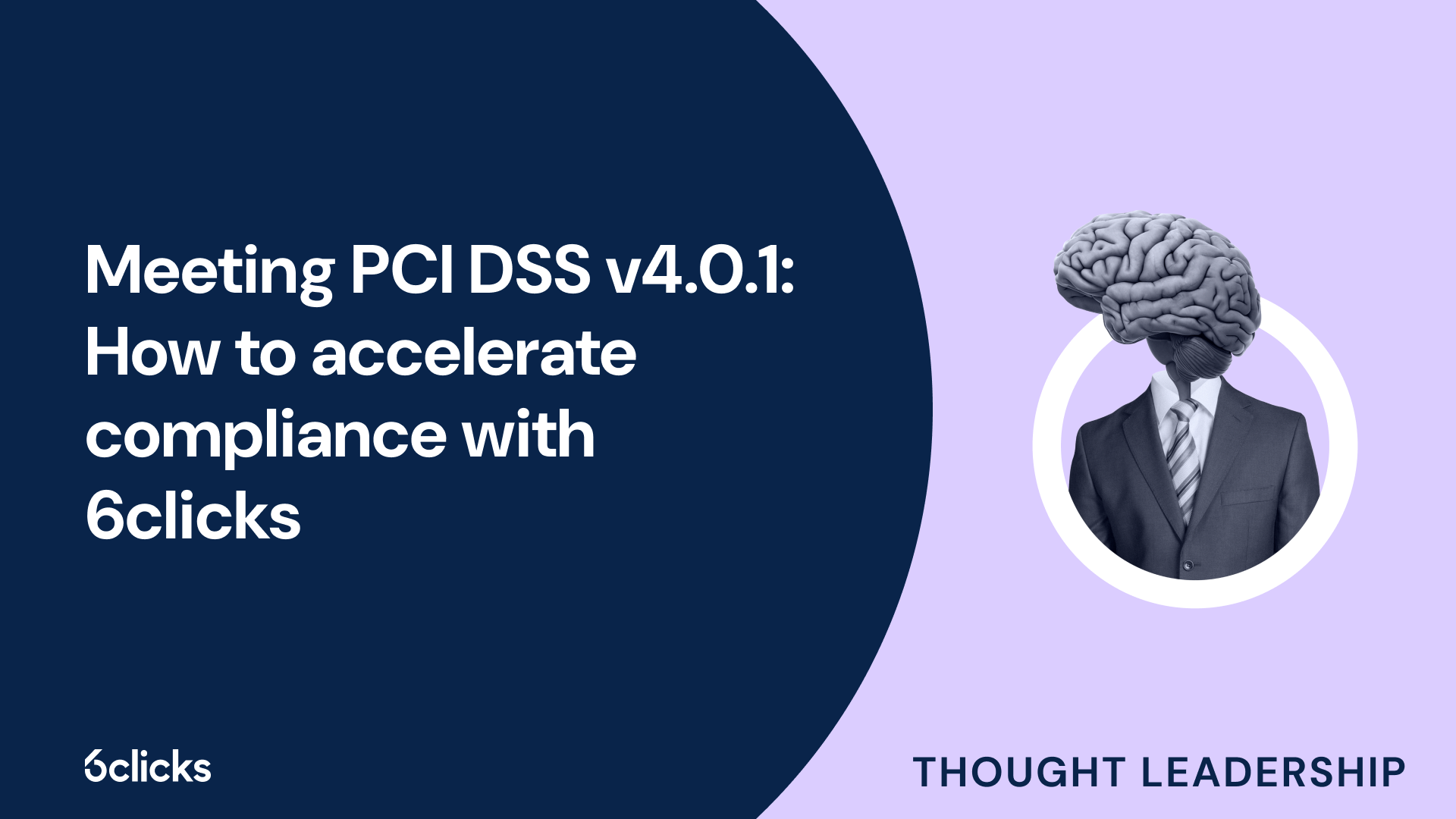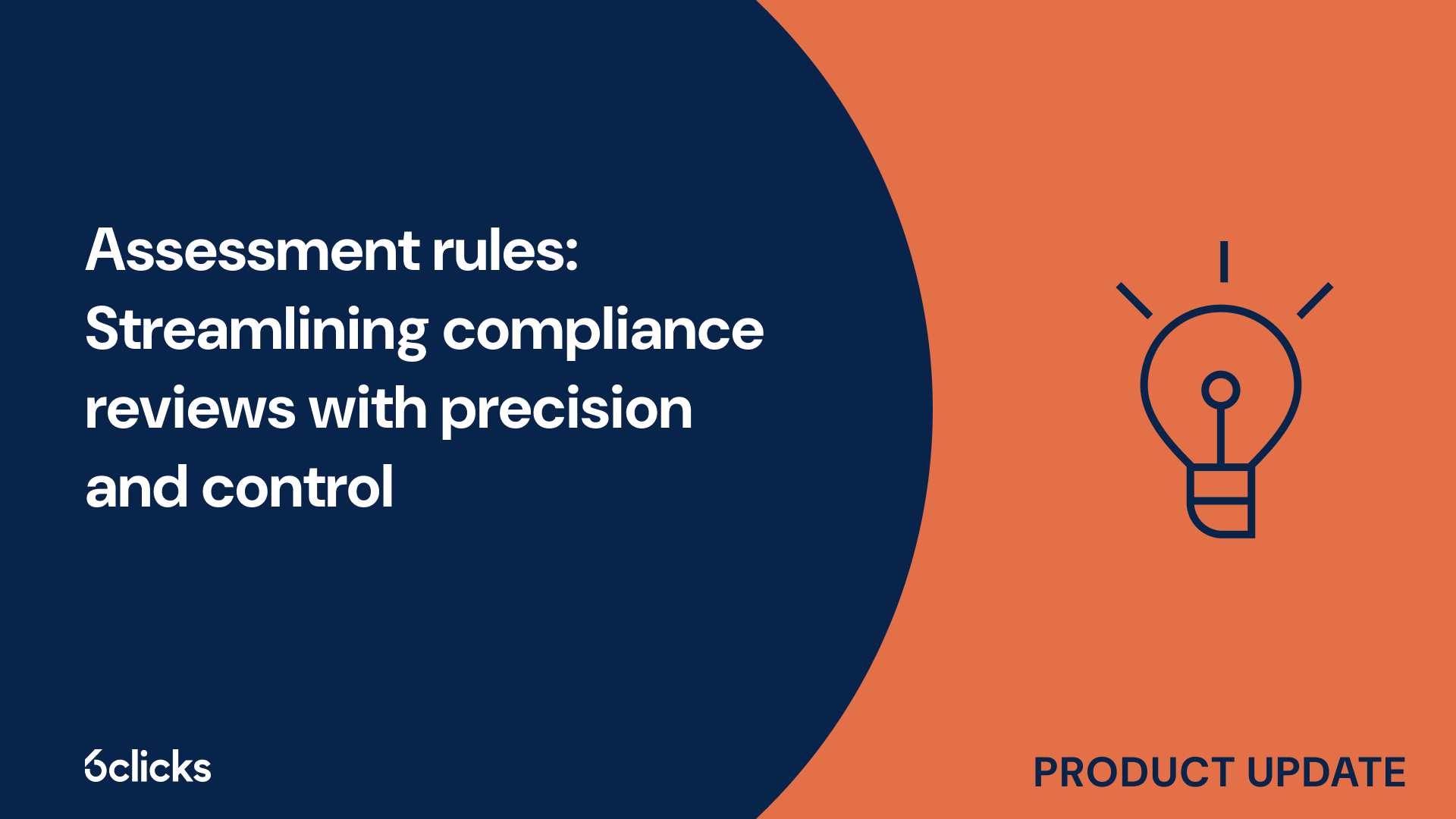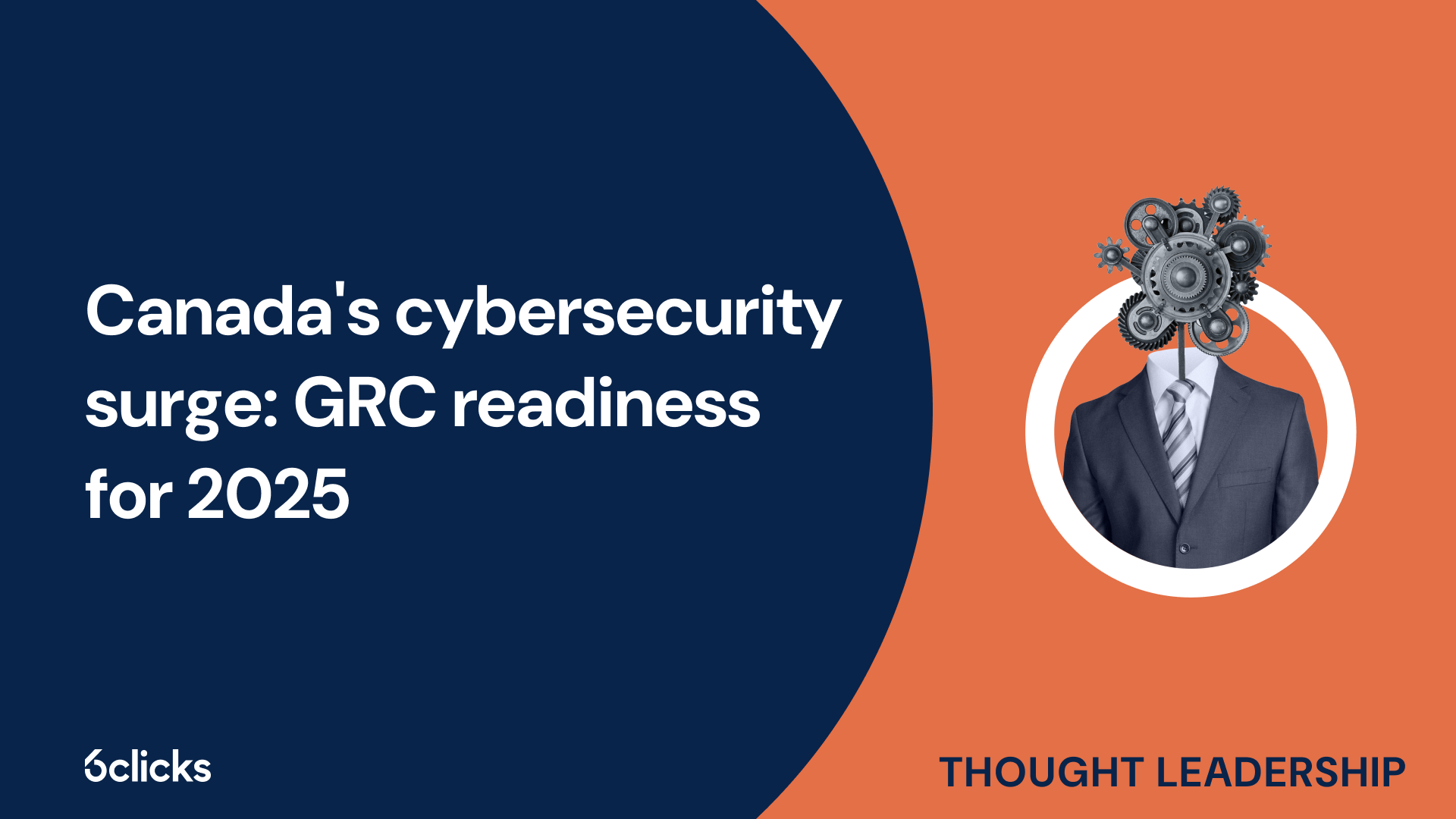The GRC buyer’s guide for 2025: Building resilience with AI-powered, federated solutions
Discover the ultimate GRC buyer's guide for 2025! Uncover how AI-powered, federated solutions transform compliance and security management for industries like government, aerospace, banking, and more. Learn about centralized control, continuous compliance, and advanced cyber GRC capabilities. Download now!
-1.png?width=200&height=249&name=Group%20193%20(1)-1.png)
The GRC buyer’s guide for 2025: Building resilience with AI-powered, federated solutions
Is CIS or NIST better?
When it comes to cybersecurity, government agencies and private businesses alike face an increasing number of cyber threats. To effectively address these challenges, organizations need to establish a strong security posture. Two frameworks commonly used to guide cybersecurity programs and strategies are the CIS Controls and the NIST Cybersecurity Framework (CSF). The CIS Controls, developed by the Center for Internet Security (CIS), provide a prioritized list of actions that organizations can take to defend against the most common cyber threats. On the other hand, the NIST CSF, developed by the National Institute of Standards and Technology (NIST), offers a voluntary framework that organizations can use to manage and reduce cybersecurity risk. Both frameworks share common goals of improving cybersecurity outcomes and guiding organizations towards a more secure future. In this article, we will explore the key aspects of these frameworks, their approach to cybersecurity, and how they can help organizations enhance their current cybersecurity posture.
The strengths and weaknesses of both CIS and NIST frameworks.
Both CIS (Center for Internet Security) and NIST (National Institute of Standards and Technology) frameworks have their own strengths and weaknesses when it comes to cybersecurity.
CIS offers a simpler implementation process and focuses on risk education. Its Critical Security Controls (CSC) are a prioritized set of actions that offer high-value cybersecurity protection. CIS provides detailed guidance on specific actions to take to improve security posture and defend against common cyber threats. It also offers a variety of resources, including informative references and additional controls, to help organizations enhance their cybersecurity.
On the other hand, NIST CSF (Cybersecurity Framework) is more complex and suited for federal compliance. It is a voluntary framework that helps organizations manage and reduce cybersecurity risks. NIST CSF provides a flexible approach to cybersecurity that allows organizations to align their cybersecurity efforts with their business goals. It includes a comprehensive set of cybersecurity standards, guidelines, and best practices that can be tailored to meet specific organizational needs.
Understanding the differences between these frameworks is important for information security professionals. Choosing the right framework can have a significant impact on an organization's cybersecurity maturity and its ability to defend against cyber threats. It is essential to assess the strengths and weaknesses of both CIS and NIST frameworks to determine which one aligns best with an organization's goals, resources, and risk appetite. By doing so, organizations can enhance their cybersecurity efforts and achieve better cybersecurity outcomes.
Security posture of CIS
The security posture of CIS (Center for Internet Security) is commendable due to its focus on risk education and the implementation of the Critical Security Controls (CSC). CIS provides organizations with a prioritized set of actions that offer effective cybersecurity protection. By following the detailed guidance provided by CIS, organizations can improve their security posture and effectively defend against common cyber threats. Additionally, CIS offers a range of resources, including informative references and additional controls, which further enhance the cybersecurity measures implemented by organizations. With CIS, organizations can enhance their security posture and ensure a robust defense against cyber threats.
Benefits of CIS controls
CIS controls offer significant benefits to organizations seeking to enhance their cybersecurity posture. By implementing these controls, companies can prioritize their cybersecurity efforts, focus on the most critical controls, and allocate resources effectively.
One of the key advantages of CIS controls is their prioritization framework. These controls provide a curated list of 20 critical security controls that organizations should implement to mitigate cyber threats effectively. This framework helps companies identify and focus on the controls that will have the most impact on improving their security posture. By prioritizing these controls, organizations can ensure that their limited resources are invested in the areas that matter most, thereby maximizing their cybersecurity outcomes.
Moreover, the step-by-step approach and detailed guidance provided by the CIS controls are particularly beneficial for companies starting out or with limited cybersecurity expertise. The controls offer a comprehensive roadmap for implementing each control, giving organizations a clear and structured plan to follow. This guidance helps companies overcome the challenges of limited cybersecurity knowledge and provides a framework that facilitates the development and implementation of comprehensive security policies and procedures.
Implementation tiers and additional controls
The CIS framework for cybersecurity includes implementation tiers and additional controls to further enhance an organization's security posture. The implementation tiers are designed to help organizations prioritize actions based on their relevance and effectiveness in mitigating cyber risks.
There are four implementation tiers in the CIS framework, ranging from Initial to Adaptive. Each tier represents a different level of cybersecurity maturity and indicates the organization's commitment to implementing and maintaining cybersecurity controls. The tiers provide a roadmap for organizations to assess their current cybersecurity posture and work towards improving it over time. By clearly defining the steps to progress from one tier to the next, organizations can prioritize their efforts and allocate resources accordingly.
In addition to the implementation tiers, the CIS framework also recommends additional controls that can complement and enhance the effectiveness of the 20 critical security controls. These additional controls are not included in the implementation tiers but are highly recommended for organizations seeking to further enhance their cybersecurity measures. These controls address specific areas such as mobile devices, email and web browser protections, and account monitoring.
By combining the implementation tiers with the recommended additional controls, organizations can develop a comprehensive cybersecurity strategy that prioritizes actions based on their relevance and effectiveness. This approach enables organizations to allocate their limited resources in a targeted manner, focusing on the areas that will have the greatest impact on reducing cyber risks and improving their overall security posture.
Cyber risk assessment for CIS framework
Cyber risk assessment is a crucial component of the CIS (Center for Internet Security) framework, which helps organizations evaluate their cybersecurity risks and vulnerabilities. By following a systematic process, organizations can assess their current cybersecurity posture, identify potential threats, and determine the level of risk associated with each vulnerability.
The first step in the cyber risk assessment process is to evaluate the organization's current cybersecurity posture. This involves assessing the effectiveness of existing security controls, such as firewalls, anti-malware software, and intrusion detection systems. By understanding the strengths and weaknesses of these controls, organizations can identify areas for improvement.
Next, organizations should identify and prioritize potential cybersecurity risks. This involves analyzing their critical assets and determining the potential impact of an attack on these assets. For example, if a government agency's database containing sensitive citizen information is compromised, the impact would be severe. By considering the criticality of assets, organizations can allocate resources effectively in addressing the most significant risks.
Once potential risks are identified, organizations must assess the vulnerabilities associated with each risk. This involves evaluating the likelihood of an attack and the potential consequences. By considering factors such as weak passwords, unpatched software, and lack of employee awareness, organizations can determine the level of risk and prioritize mitigation efforts accordingly.
Regularly updating the risk assessment is crucial to adapt to evolving cybersecurity threats. The cybersecurity landscape is constantly changing, with new threats emerging regularly. Organizations must continually reassess their risks and vulnerabilities to ensure that their cybersecurity measures remain effective.
Approach to cybersecurity with the CIS framework
When it comes to cybersecurity, organizations need a comprehensive approach to protect their critical assets and mitigate cyber threats. One effective framework that provides detailed guidelines and step-by-step guidance for implementation is the CIS (Center for Internet Security) framework. This framework offers a common language that can be understood by both technical and non-technical teams, ensuring a collaborative approach to cybersecurity.
The CIS framework has several benefits that make it a preferred choice for organizations. One key benefit is its prioritization capabilities. The framework allows organizations to prioritize their cybersecurity efforts based on their specific needs and available resources. This helps in allocating resources effectively, focusing on the most critical areas first, and ensuring a cost-effective approach to cybersecurity.
Another advantage of the CIS framework is its emphasis on implementation tiers and additional controls. Implementation tiers provide organizations with a roadmap for improving their cybersecurity maturity. These tiers categorize organizations into different levels based on their current cybersecurity posture and provide actionable steps to progress to higher tiers. Additionally, the CIS framework includes a set of additional controls that can be applied to enhance cybersecurity efforts beyond the baseline controls.
Security posture of NIST
The Security Posture of NIST, the National Institute of Standards and Technology, is highly regarded in the field of cybersecurity. NIST provides comprehensive security policies and guidelines that can help organizations improve their cybersecurity efforts. The NIST Cybersecurity Framework (CSF) is a voluntary framework that provides a common language and set of standards for organizations to manage and reduce cybersecurity risk. It focuses on five core functions: Identify, Protect, Detect, Respond, and Recover. These functions help organizations assess their current cybersecurity posture, develop effective cybersecurity strategies, and implement appropriate controls and response plans. The NIST CSF also offers informative references and individual controls that organizations can utilize to enhance their cybersecurity practices. With its well-established reputation and extensive resources, NIST provides the necessary guidance and support for organizations to effectively address cyber threats and improve their overall security posture.
Benefits of NIST CSF framework
The NIST CSF framework offers several benefits for organizations looking to enhance their cybersecurity posture. One of the primary advantages is its ability to help identify cyber risks and create plans to address them effectively. By following the guidelines and best practices outlined in the framework, organizations can thoroughly assess their current cybersecurity posture, identify vulnerabilities and potential threats, and develop robust mitigation strategies.
Another advantage of the NIST CSF is its widespread adoption. It is a widely implemented framework utilized not only by government agencies but also by private sector organizations. This, in turn, promotes consistency and collaboration in cybersecurity efforts across different industries.
Furthermore, the NIST CSF is highly flexible. It allows organizations to select and implement relevant security standards that align with their specific security profile, risk appetite, and business model. This adaptability ensures that organizations can prioritize their cybersecurity goals and tailor their implementation plans accordingly.
Implementation tiers and additional controls
The CIS (Center for Internet Security) framework provides a structured approach to cybersecurity by offering implementation tiers and additional controls. These tiers assist organizations in prioritizing actions based on their relevance and effectiveness in mitigating cyber risks.
The implementation tiers in the CIS framework consist of five levels: Initial, Defined, Consistent, Managed, and Optimized. These tiers help organizations assess their current cybersecurity posture and determine the appropriate level of security measures and controls needed. The tiers also provide a roadmap for organizations to advance their cybersecurity maturity incrementally.
Furthermore, the CIS framework offers additional controls that organizations can implement to enhance their cybersecurity posture. These controls focus on various aspects of cybersecurity, including secure configurations, administrative privileges, malware defenses, and incident response plans. By incorporating these additional controls, organizations can bolster their defenses against cyber threats and strengthen their overall security posture.
By utilizing the implementation tiers and additional controls provided by the CIS framework, organizations can effectively prioritize their cybersecurity efforts. They can identify areas that require immediate attention and allocate resources accordingly. This approach ensures that actions taken are relevant and effective in addressing the specific cyber risks faced by the organization.
Cyber risk assessment for NIST framework
A cyber risk assessment using the NIST framework involves a systematic process of identifying, assessing, and mitigating potential cyber risks faced by an organization. The NIST framework provides a structured approach to managing and improving cybersecurity posture.
The NIST framework includes implementation tiers that correspond to an organization's cybersecurity posture. These tiers are: Partial, Risk-Informed, Repeatable, Adaptive, and Aligned. Organizations can use these tiers to understand their current level of cybersecurity readiness and determine the appropriate level of security controls and measures needed to achieve their desired cybersecurity outcomes.
The core functions of the NIST Cybersecurity Framework (CSF) include Identify, Protect, Detect, Respond, and Recover. These functions serve as a guide for conducting a cyber risk assessment.
In the Identify function, organizations identify and understand their assets, including systems, networks, data, and personnel. This step provides a foundation for assessing risks and prioritizing security measures.
The Assess function involves evaluating the risks associated with identified assets. This includes identifying potential threats, vulnerabilities, and impacts that could affect the organization's operations and critical assets.
The Protect function focuses on implementing protective measures to mitigate identified risks. This includes implementing secure configurations, access controls, and other security controls to safeguard assets.
The Detect function involves the continuous monitoring and detection of cybersecurity events. This includes deploying appropriate tools and technologies to identify and analyze potential security incidents.
The Respond function includes developing and implementing response plans and procedures to address identified cybersecurity incidents. This includes effectively containing and mitigating the impacts of incidents in a timely manner.
Lastly, the Recover function involves developing and implementing recovery plans and strategies to restore normal operations and minimize the impacts of cybersecurity incidents.
Conducting a thorough cyber risk assessment using the NIST framework is crucial for organizations to identify, assess, and mitigate potential cyber risks. By following the core functions and leveraging the implementation tiers, organizations can enhance their cybersecurity posture and effectively manage their cyber risk landscape.
Approach to cybersecurity with the NIST framework
The NIST framework provides organizations with an effective approach to cybersecurity by offering a comprehensive set of guidelines and best practices. It encompasses key features that help organizations assess their current cybersecurity posture, identify risks, and implement appropriate security controls to achieve their desired cybersecurity outcomes.
One of the key features of the NIST framework is its implementation tiers. These tiers allow organizations to assess and understand their cybersecurity readiness. The tiers consist of five levels: Partial, Risk-Informed, Repeatable, Adaptive, and Aligned. By evaluating their current tier, organizations can determine the level of security controls and measures needed to improve their cybersecurity posture.
Additionally, the NIST framework offers additional controls that organizations can implement to enhance their cybersecurity efforts. These controls address specific cybersecurity challenges and provide organizations with a more comprehensive security posture. By incorporating these additional controls into their cybersecurity programs, organizations can better defend against cyber threats and protect their critical assets.
The benefits of adopting the NIST framework include a structured approach to cybersecurity, improved risk management, and alignment with industry standards. This framework provides organizations with a common language and methodology for assessing and strengthening their cybersecurity capabilities. It also enables collaboration between government agencies and private businesses, fostering a unified approach to addressing cyber threats.
Comparing the two frameworks
Comparing the CIS Controls and the NIST Cybersecurity Framework:
The CIS Controls and the NIST Cybersecurity Framework are two well-known and respected frameworks used in the field of cybersecurity. While both frameworks aim to enhance an organization's cybersecurity posture, they have different approaches and features. In this article, we will compare these two frameworks and explore their strengths and weaknesses. By understanding the key differences and similarities between the CIS Controls and the NIST Cybersecurity Framework, organizations can make an informed decision about which framework aligns best with their cybersecurity goals and requirements.
Comparative analysis between the two frameworks
The comparative analysis between the CIS (Center for Internet Security) and NIST (National Institute of Standards and Technology) frameworks reveals distinct differences and strengths.
Firstly, the CIS framework provides explicit and prescriptive controls that organizations can implement to enhance their cybersecurity posture. These controls are specific and measurable, offering a clear roadmap for organizations to follow. On the other hand, the NIST Cybersecurity Framework (CSF) focuses on security objectives rather than explicit controls. It provides a high-level approach that allows organizations to tailor their cybersecurity programs to their unique needs.
In terms of their approach to cybersecurity, CIS focuses on a prioritized list of critical security controls that address the most common cybersecurity threats. These controls are constantly updated to reflect emerging threats. Meanwhile, NIST CSF takes a comprehensive approach by providing a voluntary framework that encompasses all aspects of cybersecurity. It identifies five functions: Identify, Protect, Detect, Respond, and Recover, and allows organizations to assess their current cybersecurity posture and make improvements based on these functions.
When it comes to maturity, CIS provides implementation tiers that allow organizations to measure their progress and assess their cybersecurity maturity. They can work towards achieving higher tiers as they enhance their security controls. On the other hand, the NIST CSF does not explicitly address maturity levels but offers informative references to other frameworks that provide more maturity models and assessment tools.
To create a unified security policy, the concept of the 'Framework of frameworks' can be used. It involves combining multiple frameworks, such as CIS and NIST CSF, to harness their strengths and align them with the organization's cybersecurity goals and risk appetite. This approach provides organizations with a robust and comprehensive security policy that addresses different aspects of cybersecurity.
Key differences between the frameworks advantages and disadvantages of both frameworks
The key differences between the CIS (Center for Internet Security) and NIST (National Institute of Standards and Technology) frameworks lie in their approach to cybersecurity and the level of control they provide.
CIS framework offers explicit controls that organizations can implement to enhance their cybersecurity posture. These controls are specific and measurable, providing a clear roadmap for organizations to follow. This approach allows organizations to prioritize their efforts and focus on addressing the most common cybersecurity threats. However, the prescriptive nature of these controls may not provide the flexibility necessary for organizations with unique needs or those operating in rapidly evolving environments.
On the other hand, NIST CSF takes a risk-based guidance approach. It focuses on security objectives and provides a high-level framework that allows organizations to tailor their cybersecurity programs based on their specific needs and goals. This flexibility enables organizations to align their cybersecurity efforts with their overall business objectives. However, the lack of explicit controls may make it difficult for organizations with limited cybersecurity expertise to implement the framework effectively.
In terms of maturity-driven approach, CIS offers implementation tiers that allow organizations to measure their progress and assess their cybersecurity maturity. By working towards achieving higher tiers, organizations can continuously enhance their security controls and overall posture. In contrast, NIST CSF does not explicitly address maturity levels but provides informative references to other frameworks that offer more maturity models and assessment tools.
Using both frameworks can provide numerous benefits. Both CIS and NIST CSF share common goals of enhancing cybersecurity posture, protecting critical assets, and mitigating cyber threats. By combining their strengths, organizations can develop a comprehensive cybersecurity strategy that addresses various aspects of security. The explicit controls provided by CIS can be complemented by the risk-based guidance of NIST CSF, allowing organizations to strike a balance between prescriptive measures and flexibility. Ultimately, organizations can leverage the best of both frameworks to create a robust security posture tailored to their specific needs and risk appetite.







